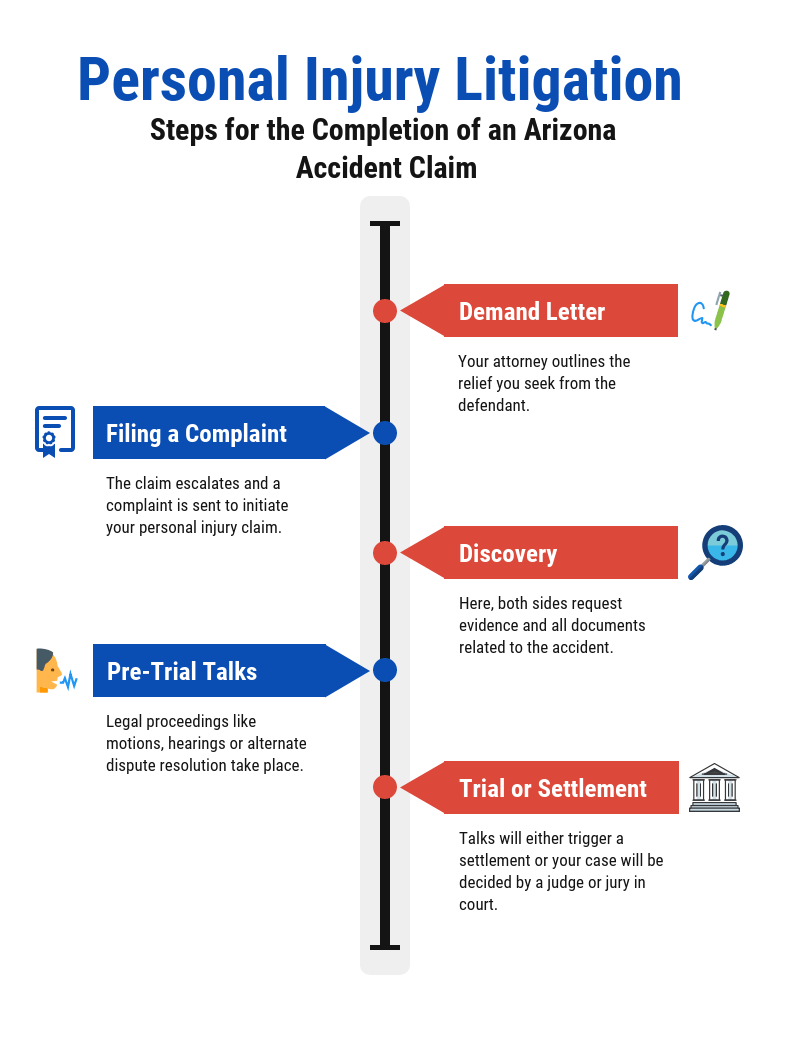Accidents happen. Sometimes, they lead to injuries. These injuries can be serious. When this occurs, you may need help. Help for costs. Help for recovery. This is where a personal injury claim comes in. But, what is this process? Let’s explore it step by step.
Step 1: Seek Medical Attention
First, take care of yourself. If you are hurt, see a doctor. Medical care is important. It helps you heal. It also helps your claim. Medical records show your injuries. They prove you need help.
Step 2: Gather Evidence
After an accident, gather evidence. Evidence supports your claim. Take photos of the scene. Keep records of your injuries. Save bills and receipts. These prove your costs.
Step 3: Report the Accident
Next, report the accident. Tell the police if needed. Inform your insurance company. Reporting helps document what happened. This is important for your claim.
Step 4: Consult an Attorney
Consider getting an attorney. They know the law. They help with your claim. An attorney can guide you. They make the process easier. They fight for your rights.
Step 5: File the Claim
Now, it’s time to file the claim. This means asking for compensation. You send a letter to the insurance company. This letter explains your injuries. It details your losses. It requests payment.
Step 6: Wait for the Insurance Response
The insurance company reviews your claim. They may ask questions. They may want more information. Be patient. This step can take time.
Step 7: Negotiate a Settlement
The insurance company may offer money. This is called a settlement. Sometimes, it is not enough. You can negotiate. An attorney helps with this. The goal is fair compensation.
Step 8: Accept or Reject the Offer
Once you get an offer, decide. Is it fair? If yes, accept it. If not, reject it. You can ask for more. You can continue negotiations.


Step 9: Go to Court
Sometimes, a fair offer is not made. Then, you may go to court. Court means a judge decides. An attorney helps here too. They present your case. They argue for you.
Step 10: Receive Compensation
At last, you receive compensation. This covers costs. Medical bills, lost wages, and more. It helps you recover. It supports your future.
Important Tips
Remember some tips. Always keep records. Stay organized. Be honest about your injuries. Follow your doctor’s advice. These help your claim.
Understanding Compensation
Compensation means money. It pays for things. Medical costs, repairs, and more. There are two types. Economic and non-economic.
Economic Damages
These are direct costs. Like medical bills. Lost wages. Repair costs. You can prove them with bills. They are easy to measure.
Non-Economic Damages
These are harder to measure. Like pain. Emotional distress. Loss of enjoyment. You cannot show them with bills. But, they are real.
Role of Insurance
Insurance plays a big role. It pays for damages. Home insurance, car insurance, or health insurance. They all help.
Common Mistakes
- Not seeing a doctor.
- Not gathering evidence.
- Not reporting the accident.
- Not consulting an attorney.
- Accepting a low offer quickly.
Frequently Asked Questions
What Is A Personal Injury Claim?
A personal injury claim seeks compensation for injuries caused by someone else’s negligence.
How Long Does A Personal Injury Claim Take?
Claims can take months to years, depending on complexity and cooperation.
What Damages Can Be Claimed In A Personal Injury Case?
You can claim medical expenses, lost wages, and pain and suffering.
How To Start A Personal Injury Claim?
Begin by gathering evidence and contacting a personal injury attorney.
Conclusion
The personal injury claim process can be tough. But, it is manageable. Follow the steps. Seek help when needed. Protect your rights. Get the compensation you deserve.
Remember, you are not alone. Many people go through this. You can succeed. You can recover. You can move forward.
Read More:
- Best Cities for Real Estate Investment: Top Picks 2025
- Real Estate Market Trends: Unlocking 2025 Insights
- Pedestrian Accident Attorney: Your Legal Advocate Today
- Housing Bubble: Uncovering the Next Big Market Shift
- Average Settlement for Personal Injury Claim: Maximize Your Payout
- Full Coverage Auto Insurance near Me: Find the Best Deals
- How to File an Auto Insurance Claim: Expert Tips
- Best Car Insurance Companies 2025: Top Picks Revealed